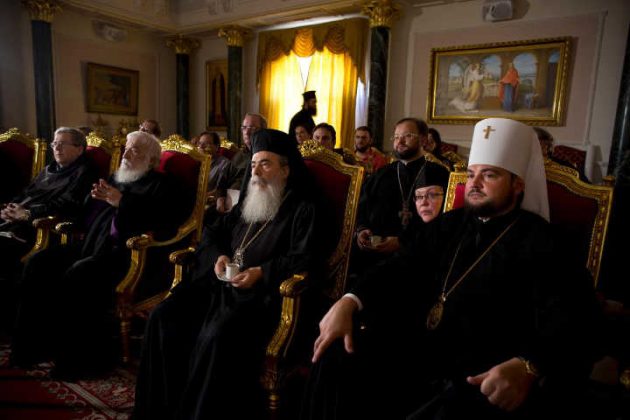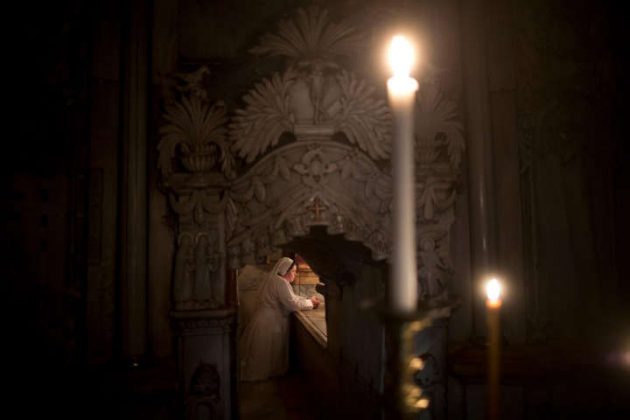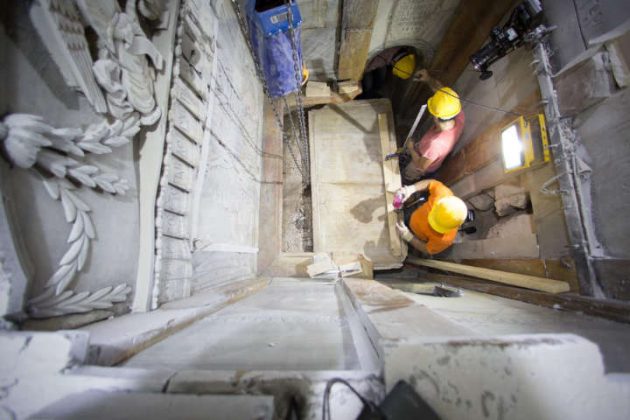For the first time in centuries, scientists have uncovered the original surface upon which Jesus Christ once laid. For He is not there, because He is Risen. However, given the current dogma and direction of science, rather than tell the truth about Jesus Christ’s resurrection science may try and distort facts.
“The marble covering of the tomb has been pulled back, and we were surprised by the amount of fill material beneath it,” said Fredrik Hiebert, archaeologist-in-residence at the National Geographic Society, a partner in the restoration project. “It will be a long scientific analysis, but we will finally be able to see the original rock surface on which, according to tradition, the body of Christ was laid.”
[fvplayer src=”https://player.vimeo.com/external/189309443.sd.mp4?s=6d308d5aa36b5d4003510958911d5e86700fb2b3&profile_id=165″ splash=”https://christianjournal.net/wp-content/uploads/2016/10/holy_sepulchre1.jpg”]
According to Biblical tradition, the body of Jesus Christ was laid on a shelf or “burial bed” hewn from the side of a limestone cave. After all of these years, science is still attempting to debunk the mystical resurrection of the Lord and Savior Jesus Christ.
This burial shelf is now enclosed by a small structure known as the Edicule (from the Latin aedicule, or “little house”), which was last reconstructed in 1808-1810 after being destroyed in a fire. The Edicule and the interior tomb are currently undergoing restoration by a team of scientists from the National Technical University of Athens, under the direction of Chief Scientific Supervisor Professor Antonia Moropoulou.
The exposure of the burial bed is giving researchers an unprecedented opportunity to study the original surface of what is considered the most sacred site in Christianity. An analysis of the original rock may enable them to better understand not only the original form of the tomb chamber, but also how it evolved as the focal point of veneration since it was first identified by Helena, mother of the Roman emperor Constantine, in A.D. 326.
“We are at the critical moment for rehabilitating the Edicule,” Moropoulou said. “The techniques we’re using to document this unique monument will enable the world to study our findings as if they themselves were in the tomb of Christ.”
Mainstream scientists have yet to grasp the possibility of resurrection, but Christ was resurrected after death, and the women who came to anoint his body three days after the burial, shouted with joy because He wasn’t there for He is risen.
In 2015, the Greek Orthodox Patriarchate of Jerusalem, with the agreement of the other two major communities, invited the National Technical University of Athens (which had previously led restoration projects on the Athenian Acropolis and the Hagia Sophia) to study the Edicule. The communities of the Church of the Holy Sepulchre agreed to restore the structure in March 2016, with work to be completed by the spring of 2017. Major donors to the $4-million-plus project include a royal benefaction from Jordan’s King Abdullah II, and $1.3-million gift from Mica Ertegun to the World Monuments Fund in support of the project.
The National Geographic Society, with the blessing of the Greek Patriarch of Jerusalem and the other religious communities, formed a strategic alliance with the National Technical University of Athens for cultural heritage preservation. For an exclusive look at the restoration project, watch Explorer on National Geographic Channel, coming in November.
Currently, the scientists are undergoing an extensive analysis of the location, which of course will take time.
At which time, Christians should remain on guard against deception. Meaning that science might attempt to sway believers away from the faith, claiming that there has been some “new revelation.” However, depending on findings, there is always the possibility that the scientists could in fact “discover” their version of the truth that would then be used to deceive Christians everywhere that Christ never rose from the dead as the Bible describes.
Works Cited
Kristin Romey. “Exclusive: Christ's Burial Place Exposed for First Time in Centuries .” National Geograpghic. . (2016): . . http://bit.ly/2eOwoVG






![[VIDEO] Drag Queen Drag Shows Are Now Infesting Churches](https://christianjournal.net/wp-content/uploads/2019/11/Screenshot-2019-11-22-at-9.02.01-PM-218x150.png)
![[VIDEO] Starbucks Worker Dumps Milkshake On Open Air Preachers Head](https://christianjournal.net/wp-content/uploads/2019/11/Screenshot-2019-11-22-at-7.23.43-PM-218x150.png)
![[VIDEO] Man Arrested For Threatening To Kill Female Abolitionist With Crowbar](https://christianjournal.net/wp-content/uploads/2019/11/MLock-1-218x150.jpg)
![[VIDEO] Drag Queen Drag Shows Are Now Infesting Churches](https://christianjournal.net/wp-content/uploads/2019/11/Screenshot-2019-11-22-at-9.02.01-PM-100x70.png)
![[VIDEO] Starbucks Worker Dumps Milkshake On Open Air Preachers Head](https://christianjournal.net/wp-content/uploads/2019/11/Screenshot-2019-11-22-at-7.23.43-PM-100x70.png)
![[VIDEO] Man Arrested For Threatening To Kill Female Abolitionist With Crowbar](https://christianjournal.net/wp-content/uploads/2019/11/MLock-1-100x70.jpg)


